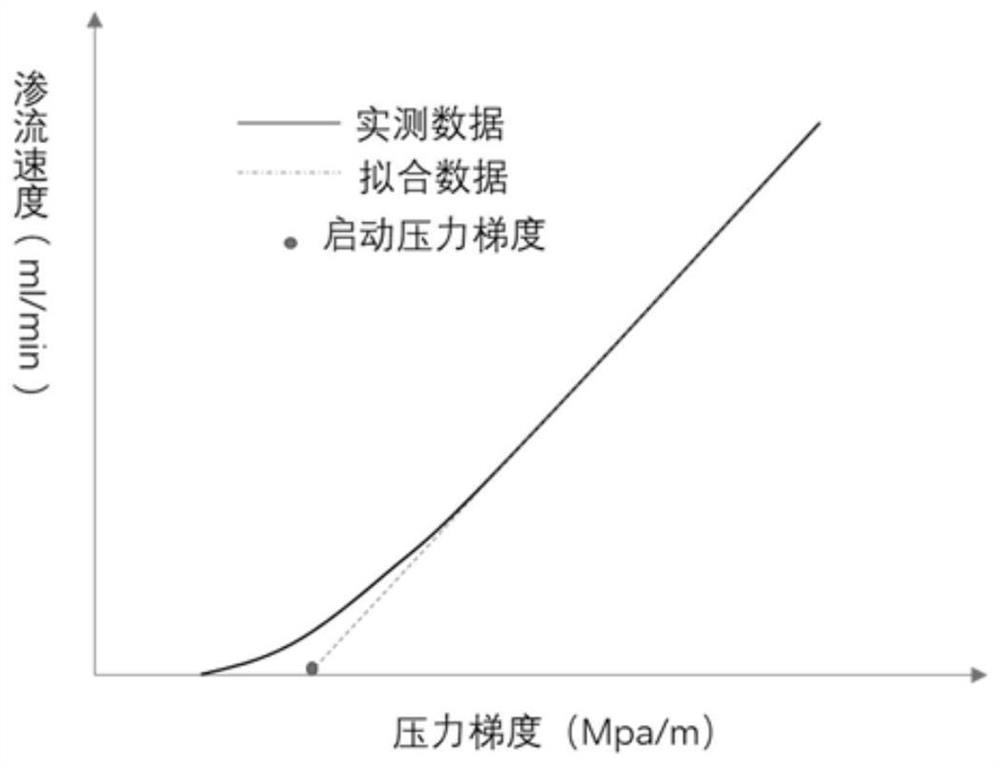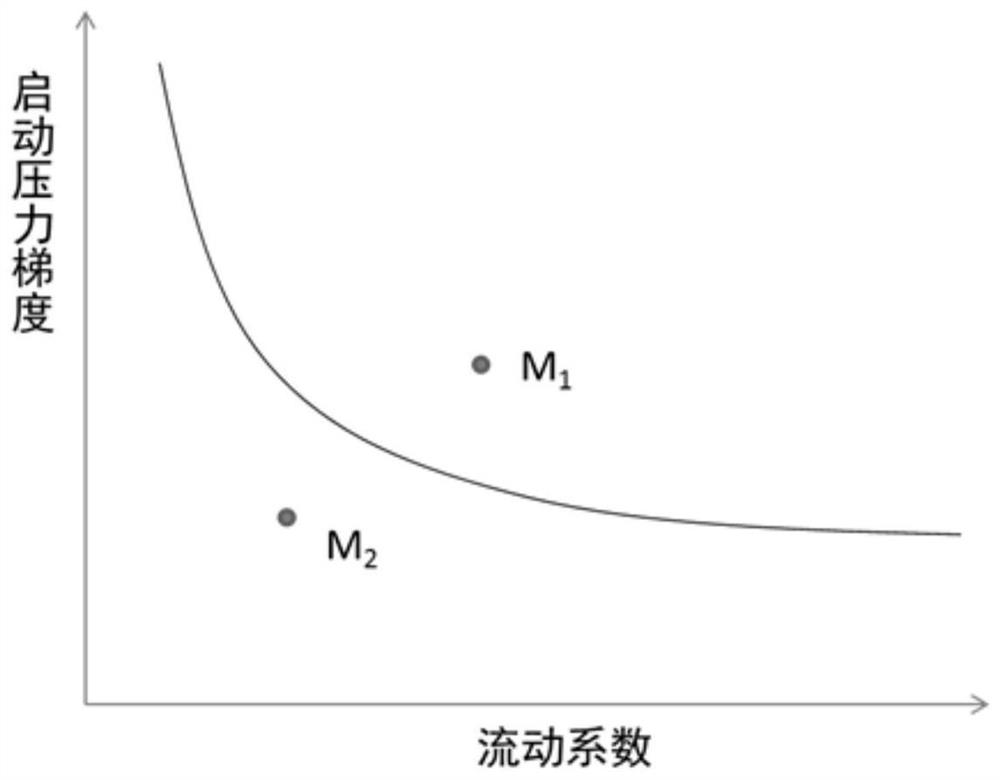Oil reservoir development mode optimization method based on starting pressure under flow coefficient
A technology for flow coefficient and reservoir development, applied in the fields of fluid production, earthwork drilling, measurement, etc., can solve problems such as inability to meet, the influence of starting pressure gradient, etc., and achieve a wide range of applications.
- Summary
- Abstract
- Description
- Claims
- Application Information
AI Technical Summary
Problems solved by technology
Method used
Image
Examples
Embodiment 1
[0039] The first embodiment of the present invention relates to a method for optimizing the reservoir development mode based on the starting pressure under the flow coefficient, including the following steps:
[0040] Step 1) obtain the flow coefficient λ under different injection media and different permeability rock cores;
[0041] Step 2) testing the seepage velocity under different pressure gradients, and determining the start-up pressure gradients of injecting different media into different permeability cores;
[0042] Step 3) Under the same reservoir core permeability, according to the flow coefficient λ obtained in step 1) and the threshold pressure gradient obtained in step 2), establish the flow coefficient-threshold pressure where the abscissa is the flow coefficient and the ordinate is the threshold pressure gradient gradient curve;
[0043] Step 4) Calculate the flow coefficient of the development mode corresponding to the injection medium according to the reservo...
Embodiment 2
[0046] On the basis of Embodiment 1, this embodiment provides a method for optimizing the reservoir development mode based on the starting pressure under the flow coefficient. The specific process of step 1) is as follows:
[0047] (1) select at least five rock cores whose air permeability K ranges are 0.01mD-0.1mD, 0.1mD-1mD, 1mD-10mD, and 10mD-50mD respectively;
[0048] (2) Test and determine the viscosity μ of different injection media at reservoir temperature and pressure;
[0049] (3) Calculate the flow coefficient according to the core air permeability K and injection medium viscosity μ The flow coefficient λ under different injection media and different permeability cores is obtained, where K is the air permeability of the core, mD; μ is the viscosity of the measured fluid, mPa·s; λ is the flow coefficient, mD / mPa·s.
[0050] Select low-permeability core wells in the same block, and on the basis of ensuring that the lithology and mineral components are similar (the li...
Embodiment 3
[0053] On the basis of Embodiment 1 or Embodiment 2, this embodiment provides a method for optimizing the reservoir development mode based on the starting pressure under the flow coefficient, and the specific process of step 2) is as follows:
[0054] (1) After the rock core is dried, put it into a physical simulation device to evacuate;
[0055] (2) Heating to the temperature of the test reservoir, testing the formation pressure of the reservoir with end back pressure, and injecting an injection medium corresponding to a development mode into the core;
[0056] (3) Inject the injection medium in constant pressure mode, the initial injection pressure is set between 105% and 110% of the end back pressure, and the outlet flow rate is measured at the same interval;
[0057] (4) When the outlet flow rate is stable, change the injection pressure, measure the outlet flow rate at the same time interval until the outlet flow rate is stable, and obtain the seepage velocity under differ...
PUM
| Property | Measurement | Unit |
|---|---|---|
| Length | aaaaa | aaaaa |
| Diameter | aaaaa | aaaaa |
Abstract
Description
Claims
Application Information
 Login to View More
Login to View More - R&D
- Intellectual Property
- Life Sciences
- Materials
- Tech Scout
- Unparalleled Data Quality
- Higher Quality Content
- 60% Fewer Hallucinations
Browse by: Latest US Patents, China's latest patents, Technical Efficacy Thesaurus, Application Domain, Technology Topic, Popular Technical Reports.
© 2025 PatSnap. All rights reserved.Legal|Privacy policy|Modern Slavery Act Transparency Statement|Sitemap|About US| Contact US: help@patsnap.com



